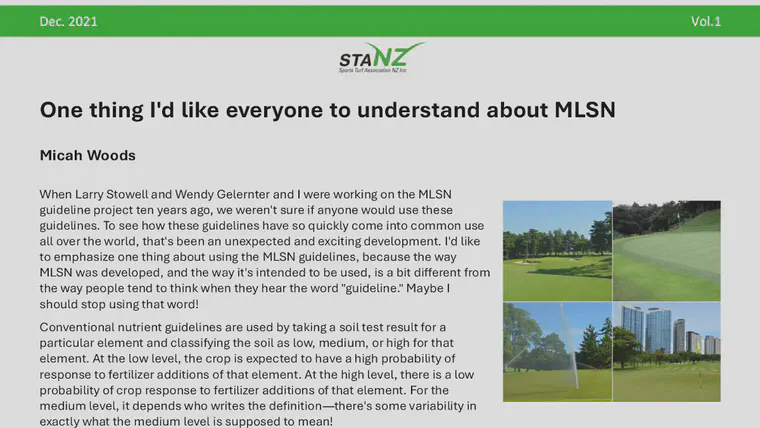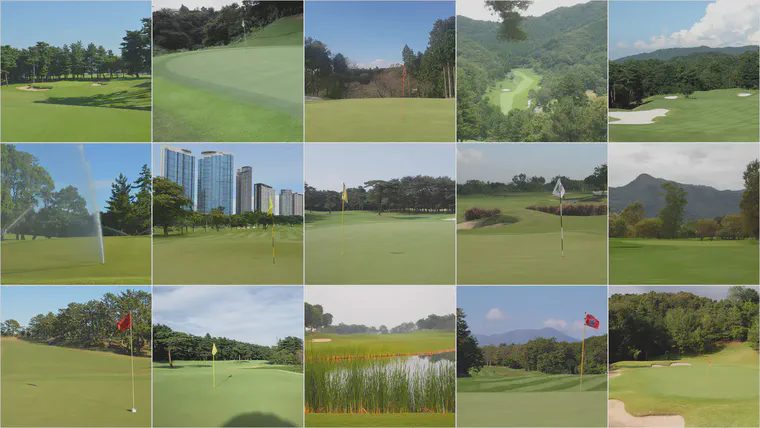One thing I'd like everyone to understand about MLSN
Joe Hollier wrote to me a few weeks ago asking if I could write something about MLSN for the STANZ newsletter. I sent this quick reply:
Gosh, this is the kind of thing I should say no to because I’m quite busy and don’t want to add more things to do to my list.
But, how many words do you need? I think on this topic I can either write out something pretty fast for you, or I may be able to put something together from previously written documents.
So basically, yes …
A few days later, I wrote this (full text below), and it has now been published in the Cut This newsletter.

Here’s the article text.
One thing I’d like everyone to understand about MLSN by Micah Woods
When Larry Stowell and Wendy Gelernter and I were working on the MLSN guideline project ten years ago, we weren’t sure if anyone would use these guidelines. To see how these guidelines have so quickly come into common use all over the world, that’s been an unexpected and exciting development. I’d like to emphasize one thing about using the MLSN guidelines, because the way MLSN was developed, and the way it’s intended to be used, is a bit different from the way people tend to think when they hear the word “guideline.” Maybe I should stop using that word!
Conventional nutrient guidelines are used by taking a soil test result for a particular element and classifying the soil as low, medium, or high for that element. At the low level, the crop is expected to have a high probability of response to fertilizer additions of that element. At the high level, there is a low probability of crop response to fertilizer additions of that element. For the medium level, it depends who writes the definition—there’s some variability in exactly what the medium level is supposed to mean.
With MLSN, we never tried to classify soils as low, medium, or high. What we did was study a large database of thousands of soil test results from good-performing professionally managed turf. Some of the sites with soil data included in the MLSN database are shown in Figure 1. Then we made some calculations, threw away the lowest 10% even though the turf was performing well, and then we ended up with a single number that we called the MLSN guideline.

What this number means is something different than the way soils are typically classified as low, medium, and high. What the MLSN number means, in simple terms, is that soil with the MLSN minimum value of an element should be able to produce high quality turf. Today. But I remind people that their grass is alive (I hope!) and is using nutrients, so the quantity of an element in the soil will be lower tomorrow than it is today. It’s not correct to do a soil test, look at the results, see they are at or above the MLSN minimum value, and say “everything’s fine, no need to apply this element as fertilizer.” One must consider the quantity of an element that the grass is going to use, and add that to the MLSN minimum amount, to determine if fertilizer applications are required or not.
This is something I think is commonly misunderstood. It’s easy to get an estimate of the maximum amount of an element the grass can use, based on the nitrogen application rate which sets an upper bound on the rate at which grass can grow (and use nutrients). There’s a tiny bit of math involved, which I think most people don’t do. I think a lot of people look at their soil test result, check if the value is above or below a guideline (such as MLSN), and from that say they are fine, with no need to apply, or if they are below the guideline, they will interpret that as an indication that the element should be applied.
That’s not the correct way to use MLSN. With MLSN, the “guideline” or minimum level should be thought of as a quantity of nutrients that are sufficient to produce good turf. To make the fertilizer rate calculation, however, one needs to add that quantity of an element, which is the MLSN value, to the quantity of the element expected to be used by the grass for the time period over which the fertilizer recommendation is being made. Then subtract the soil test amount of that element from the previously calculated sum of MLSN plus expected plant use. Now you’ve got a precise recommendation that is site specific based on your soil conditions, your grass type, your climate and the way you like to manage the grass in terms of N inputs, and for any time duration.
There’s all kinds of information about MLSN at my website, https://www.asianturfgrass.com/mlsn/, and I’ve explained MLSN and how it works and how to make these calculations in articles and videos you can find through that link. If you are using MLSN, I hope you’ll consider it not as a way to classify a soil as low, medium, or high, but instead as a way to make a site-specific fertilizer application for any time duration.